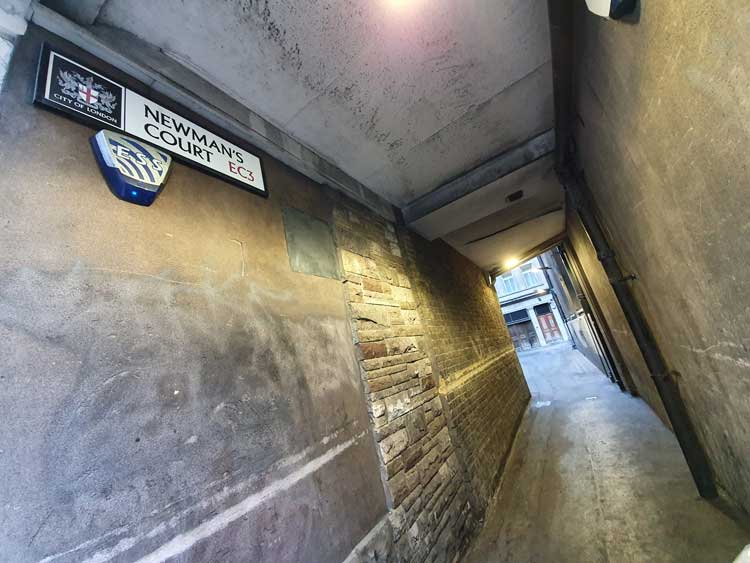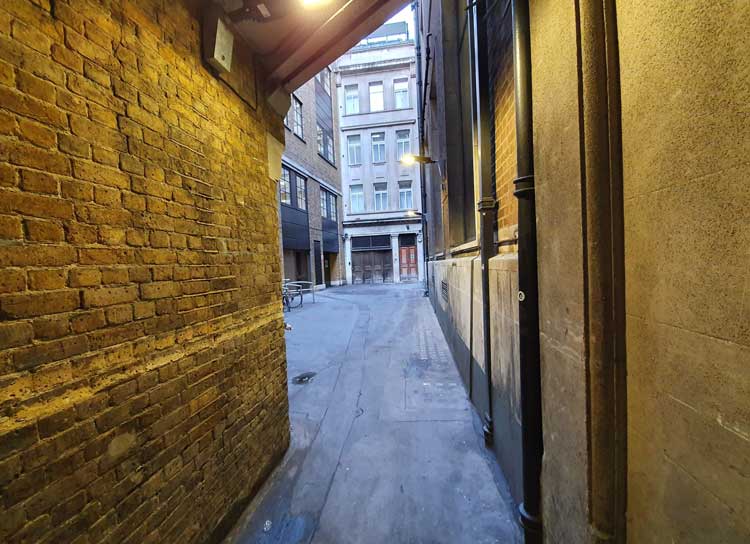
It must be said that Newman's Court does not immediately strike you as a place in which you'd like to linger for more than a few seconds.
Indeed, gazing down it from its entrance on Cornhill, you could be forgiven for thinking that there is nothing therein to warrant you paying it a second glance, let alone making the effort to squeeze your way into its mouldering hinterland.
In fact, you might well cast a furtive glance into Newman's Court, deduce that there is nothing there worth looking at, and then pass on to experience the other delights that Cornhill has to offer.
But, what if I were to tell you that it was down this nondescript little passage that the second most famous Christmas story ever told may have begun? Would that knowledge encourage you to turn away from the crashing highway and venture into the murky depths of Newman's Court?

I am, of course, talking about A Christmas Carol, and I say that it may have begun in Newman's Court because, to be perfectly honest, the exact location of Scrooge's counting house is almost impossible to pinpoint with any degree of certainty.
Dickens, you see, was non-specific about the actual address of the warehouse, over the door of which hung the sign for "Scrooge and Marley" - because Scrooge had never painted out Old Marley's name, despite the fact his partner had been dead "these seven years."
Dickens does provide a few clues in the text as to the location he had in mind.
For example, as the Christmas Eve fog thickens, he tells us that:-
"The ancient tower of a church, whose gruff old bell was always peeping slily down at Scrooge out of a gothic window in the wall, became invisible and struck the hours and the quarters in the clouds, with tremulous vibrations afterwards as if its teeth were chattering in its frozen head up there..."
The description of the gothic window limits the possible locations, as not that many church towers in the City of London have gothic windows in the walls of their towers.
But one that does is that of St Michael, Cornhill, which stands almost directly across the road from Newman's Court, and its tower does look like a promising contender for the ancient one about which Dickens was writing.

Also, given the fact that, when Bob Cratchit headed home on Christmas Eve, he "...went down a slide on Cornhill, at the end of a line of boys, twenty times, in honour of its being Christmas Eve...".
This suggests that Dickens had it in mind that Scrooge's counting house was in the vicinity of Cornhill.
Earlier in Stave One, Dickens also provided another tantalising clue when he wrote that:-
"...The fog came pouring in at every chink and keyhole, and was so dense without, that although the court was of the narrowest, the houses opposite were mere phantoms."
Look into the Newman's Court and ask yourself, is this not just such a narrow court as that being described in the novella?

That, together with the description of the church tower with its gruff old bell, and Bob's going down a slide on Cornhill, leads me to believe that the court Dickens may have had in mind was the scruffy and mouldering Newman's Court.
I say "may have had in mind" because, since Dickens doesn't actually provide an exact address for the court, identifying an exact location is an almost impossible task, and must, therefore, remain nothing more than mere speculation.
But, to me, Newman's Court most certainly fits the bill, and anyone who says that it doesn't should be boiled with his own pudding, and buried with a stake of holly through his heart. He should!